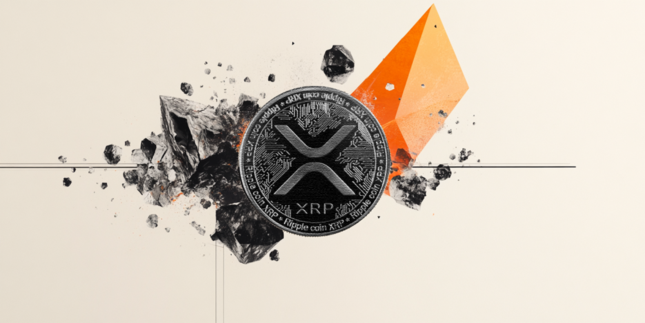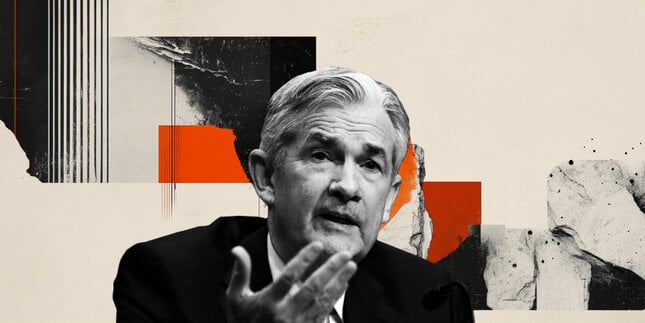-
Persistent inflation and resilient economies suggest that monetary policy needs to be tightened more, but recent financial turbulence is a reminder that there can also be a high cost of tightening too much.
-
We expect a period of stagnation or modest growth, where inflation will gradually decline, but this is a forecast with very large uncertainties in both directions – we are in a situation where history is not much of a guide.
-
Unemployment has only increased a little or not at all. Wage growth is picking up, making it more difficult to get core inflation down.
Economic events over the last three years have been extreme. The Covid-19 crisis, the policy reaction to it, unexpected double-digit inflation, very rapid interest rate increases from negative or zero levels – these are not things that happen often. On top of that, we have a major war in Europe and a tense and unpredictable geopolitical situation. This is not only a difficult time for decision makers in households, businesses and investment management, it is also extremely challenging for central banks and politicians trying to avoid the most negative outcomes.
So far this year, we have gone from markets expecting a fairly rapid decline in inflation and interest rates, to fears that inflation would prove very sticky and interest rates have to be increased a lot more – and back again after problems were exposed in the banking sector. Some of the financial market fluctuations may seem excessive, but the uncertainty is real. We do not know how much monetary policy tightening is enough to stabilise inflation around 2%.
Here in the Nordic countries, like elsewhere in Europe and in the US, the economies have been remarkably resilient against the undermining of purchasing power and higher interest rates. In particular, unemployment has barely budged despite all the headwinds facing businesses. Lower energy prices have driven inflation down, but excluding that, inflation is not really decreasing yet – in some cases, like Sweden, quite the opposite. Across countries, we have increased our forecast for how high central banks will want to set policy rates to create enough of a slowdown to control the situation.
However, there was always also the risk that the slowdown would instead be a deeper crisis. Monetary policy affects the economy with delays and in magnitudes that are difficult to estimate even at the best of times, and unemployment and other economic variables can deteriorate rapidly and suddenly as history has often shown. One way this can happen is through a financial crisis. Higher interest rates are supposed to make it more expensive and difficult to borrow, but that process can spin out of control if the tighter financial conditions cause or expose problems in banks that lead to a wider loss of confidence.
The recent cases of bank problems are related to specific issues in those banks and probably do not foreshadow any wider crisis, especially given the measures that authorities have taken to reign in the problems. However, it is no coincidence that these problems appear now, where monetary tightening is really starting to be felt. For central banks, they are likely to tip the scales a bit in the direction of raising rates less, but only in a sense where they make an already complicated situation even more difficult. It remains very important to fight inflation and prevent inflation expectations from drifting too far.
Our main scenario for the US and Europe is that we face a prolonged period of modest growth where inflation will decrease. The US is a little ahead in the process and could reach 2% cores inflation in a year or so, while it will likely take longer in the euro area and countries like Denmark, where wage growth is set to be elevated for a period. Broadly speaking, this scenario would be a success for central banks, given the starting point we have now, although it would be painful for some businesses and individuals. We recognise that it will require some luck to achieve this outcome, though. Risks of both a deeper crisis and insufficient cooling, laying the ground for problems later, are large.
This publication has been prepared by Danske Bank for information purposes only. It is not an offer or solicitation of any offer to purchase or sell any financial instrument. Whilst reasonable care has been taken to ensure that its contents are not untrue or misleading, no representation is made as to its accuracy or completeness and no liability is accepted for any loss arising from reliance on it. Danske Bank, its affiliates or staff, may perform services for, solicit business from, hold long or short positions in, or otherwise be interested in the investments (including derivatives), of any issuer mentioned herein. Danske Bank's research analysts are not permitted to invest in securities under coverage in their research sector.
This publication is not intended for private customers in the UK or any person in the US. Danske Bank A/S is regulated by the FSA for the conduct of designated investment business in the UK and is a member of the London Stock Exchange.
Copyright () Danske Bank A/S. All rights reserved. This publication is protected by copyright and may not be reproduced in whole or in part without permission.
Recommended Content
Editors’ Picks

AUD/USD weighed down by China, tariffs
AUD/USD remained on the back foot, slipping back to the area of multi-year lows around 0.5950 on the back of mounting fears surrounding tariffs and their impact on the Chinese economy.

EUR/USD refocuses on 1.1000 amid tariffs jitters
EUR/USD reversed two daily pullbacks in a row an d managed to advance to the boundaries of the 1.1000 barrier on the back of fresh weakness hurting the US Dollar and persistent tariff fears.

Gold erases gains, back to the $2,980 zone
Gold prices now lose extra ground and slip back to the area of daily troughs near $2,980 mark per troy ounce following an unsuccesful attempt to maintain the trade above the critical $3,000 level earlier in the day.

XRP drops 3% as Ripple announces $1.25 billion acquisition of prime brokerage firm Hidden Road
Ripple announced on Tuesday that it is acquiring prime brokerage firm Hidden Road to enhance its institutional offerings and increase the adoption of the RLUSD stablecoin and the XRP Ledger (XRPL).

The Fed is looking at a hefty price level
We are still in thrall to tariffs, the faux-macro “data” driving markets. The WSJ editorial board advised other countries to take their tariffs to zero so that Trump’s “reciprocal” tariffs will have to be zero, too. Cute, but no cigar.

The Best brokers to trade EUR/USD
SPONSORED Discover the top brokers for trading EUR/USD in 2025. Our list features brokers with competitive spreads, fast execution, and powerful platforms. Whether you're a beginner or an expert, find the right partner to navigate the dynamic Forex market.